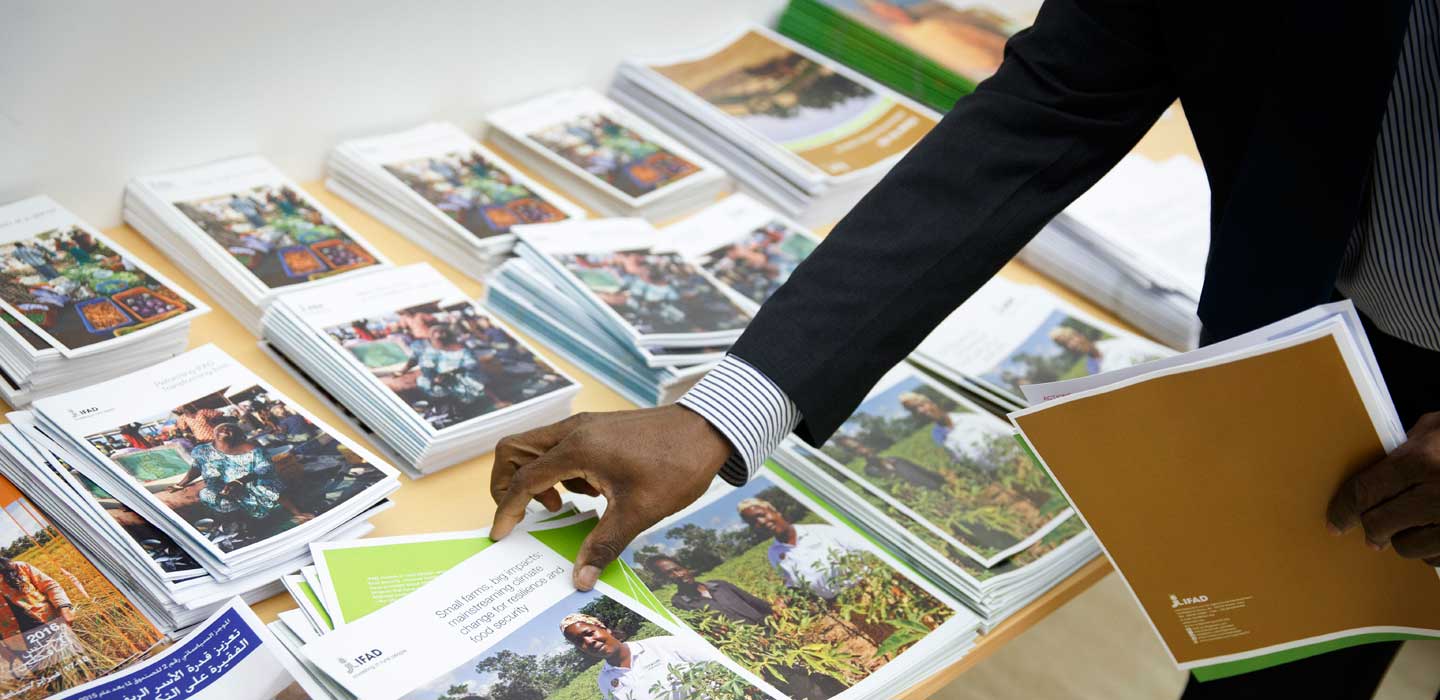Factsheets

صحف الحقائق
عرض القائمة
Search Results Filters
نتائج البحث
ASAP Morocco factsheet
يوليو 2015
The first programme component will focus on three areas: plants/crops, animals and infrastructure.
Project to Support Food Security in the Region of Maradi (PASADEM)
يونيو 2015
The project objective is to improve food and nutrition security of rural people
around 5 centers of economic development (Tessaoua, Tchadoua, Sabon Machi,
Guidan Roumdji and Djirataoua) in 18 communes in the Maradi region.
around 5 centers of economic development (Tessaoua, Tchadoua, Sabon Machi,
Guidan Roumdji and Djirataoua) in 18 communes in the Maradi region.
GEF Niger factsheet
يونيو 2015
The project objective is to improve food and nutrition security of rural people around 5 centers of economic development (Tessaoua, Tchadoua, Sabon Machi, Guidan Roumdji and Djirataoua) in 18 communes in the Maradi region.
Participatory Coastal Zone Restoration and Sustainable Management in the Eastern Province of Post-Tsunami Sri Lanka
يونيو 2015
The project design focuses on overcoming three key barriers to the restoration of coastal ecosystems: i) the gap in technical knowledge for low-cost restoration methods; ii) low priority assigned to environmental issues during the tsunami relief and reconstruction programme; and iii) continuation of ecosystem and land degradation processes.
Enhancing Resilience of Agriculture Sector in Georgia (ERASIG)
يونيو 2015
The project aims to demonstrate the adaptation potential of climate-resilient crop production systems and technologies – especially efficient irrigation technologies and conservation agriculture – combined with the rehabilitation and climateproofing of irrigation schemes and value chain infrastructures (e.g. improved storage and processing facilities, and greenhouses) in ten selected crop value chains.
PARM Result Factsheet May 2015
مايو 2015
Since its inception in December 2013, PARM has worked for a better management of risks in agriculture in developing countries, considered as a main constraint to improve farmers’ livelihoods.
ASAP Chad factsheet
مايو 2015
Climate change is exacerbating natural resource degradation and reducing the potential of productive lands. For example, rural farmers have to contend with climate shocks such as drought, rainfall deficits, floods and locust invasions. These shocks are reducing yields and making the cropping seasons hard to predict for traditional farmers. Traditional resilience strategies are no longer as effective as they were and the lean season is becoming more challenging to smallholder farmers.
ASAP Lesotho factsheet
مايو 2015
Lesotho ranks 158 out of 186 in the UNDP Human Development Index. Poverty is rife, and it is concentrated in the rural areas of the country, with the greatest incidence in the mountain areas. Lesotho's rural economy is dominated by livestock production. Lesotho's chief export is directly related to this livestock, that of wool and mohair production. Lesotho is the second largest global producer of mohair, and this counts towards a large percentage of the country 's Gross Domestic Product (GDP).
Only high quality wool and mohair can be exported, and this is dependent on the quality and health of the livestock. The main factor in raising high quality livestock is maintaining healthy rangelands.
Only high quality wool and mohair can be exported, and this is dependent on the quality and health of the livestock. The main factor in raising high quality livestock is maintaining healthy rangelands.
Investing in rural people in Cuba
أبريل 2015
IFAD recently resumed operations in Cuba after more than 20 years. The official launch of the Cooperative Rural Development Project in the Oriental Region (PRODECOR) took place on 30 October 2014.
Given the challenges the agricultural sector faces, IFAD is in a position to serve as one of the country’s strategic partners, contributing to the ongoing modernization process.
Cooperatives in Cuba are key actors in ensuring food security, as they represent 80 per cent of the country’s agricultural production. The Government of Cuba has expressed interest in re-establishing the partnership with IFAD with a view to modernizing agriculture.
This will be achieved mainly through developing non-state smallholder farmer business cooperatives. In this respect, IFAD is well placed to provide technical assistance through its projects to increase the physical, human, social and environmental assets of cooperatives.
Given the challenges the agricultural sector faces, IFAD is in a position to serve as one of the country’s strategic partners, contributing to the ongoing modernization process.
Cooperatives in Cuba are key actors in ensuring food security, as they represent 80 per cent of the country’s agricultural production. The Government of Cuba has expressed interest in re-establishing the partnership with IFAD with a view to modernizing agriculture.
This will be achieved mainly through developing non-state smallholder farmer business cooperatives. In this respect, IFAD is well placed to provide technical assistance through its projects to increase the physical, human, social and environmental assets of cooperatives.
Gender and rural development brief: West and Central Africa
مارس 2015
Three quarters of the poor population in West and Central Africa – about 90 million people – live in rural areas and depend on agriculture for their livelihoods. More than 60 per cent of the active population work in the agriculture sector. Women’s share – estimated at 70 per cent in the region as a whole and 89 per cent in the Sahel – continues to rise. Socio-politically, West and Central Africa is still very fragile, with the highest concentration of countries with IFAD operations. Despite this fragility and the poverty that affects over half the population, virtually all countries in the region have made considerable progress over the past decade, particularly in education, health and income redistribution.